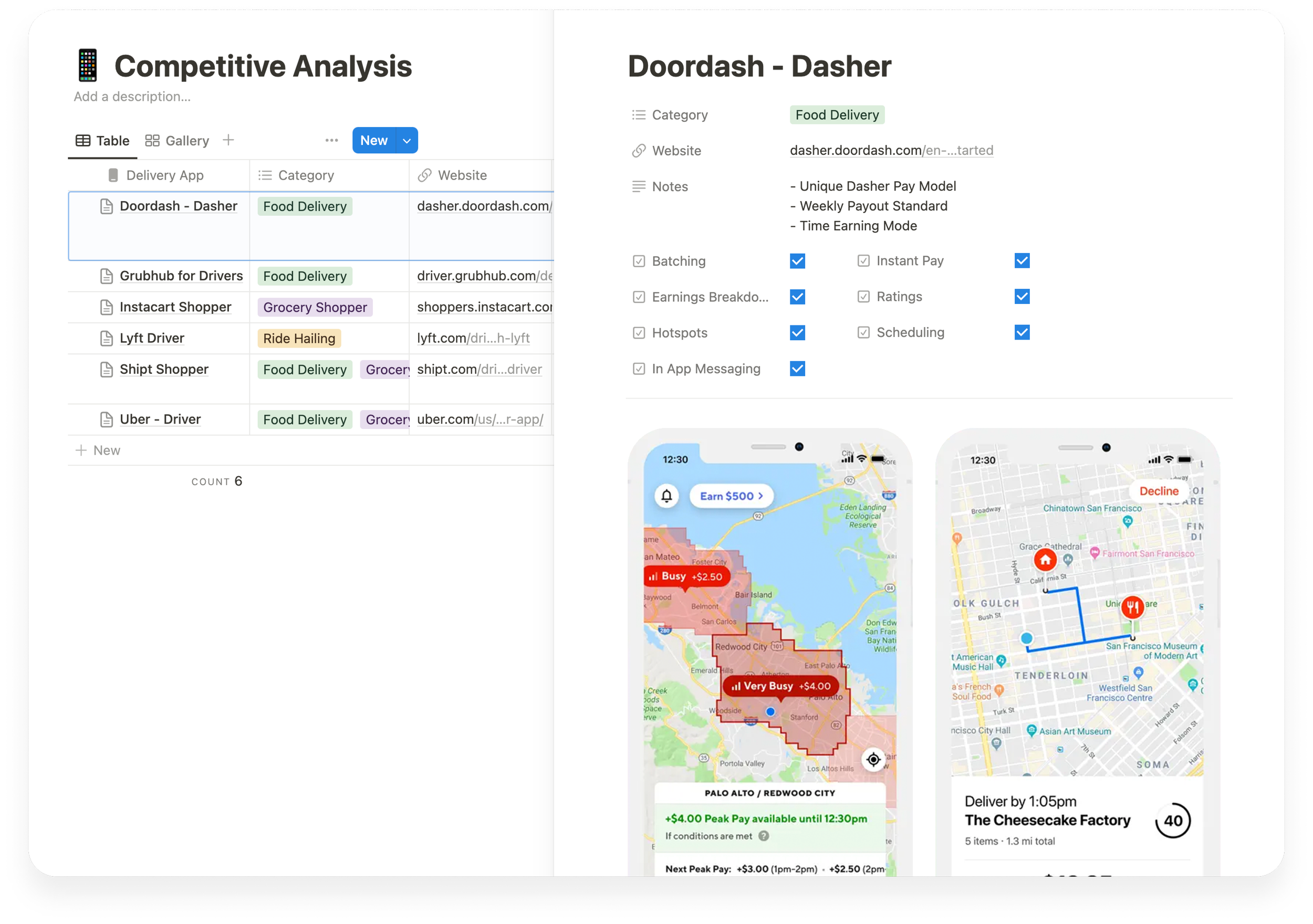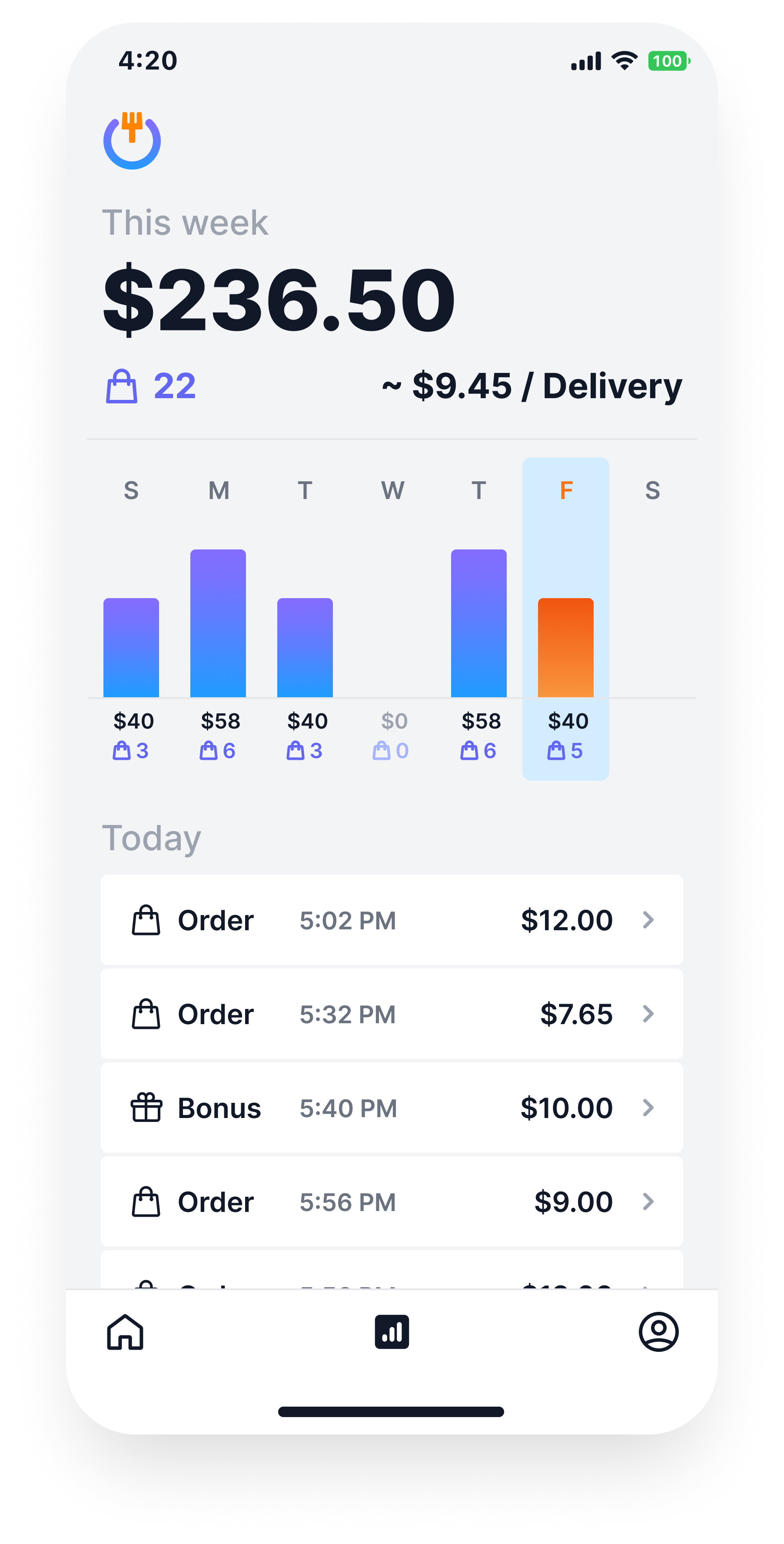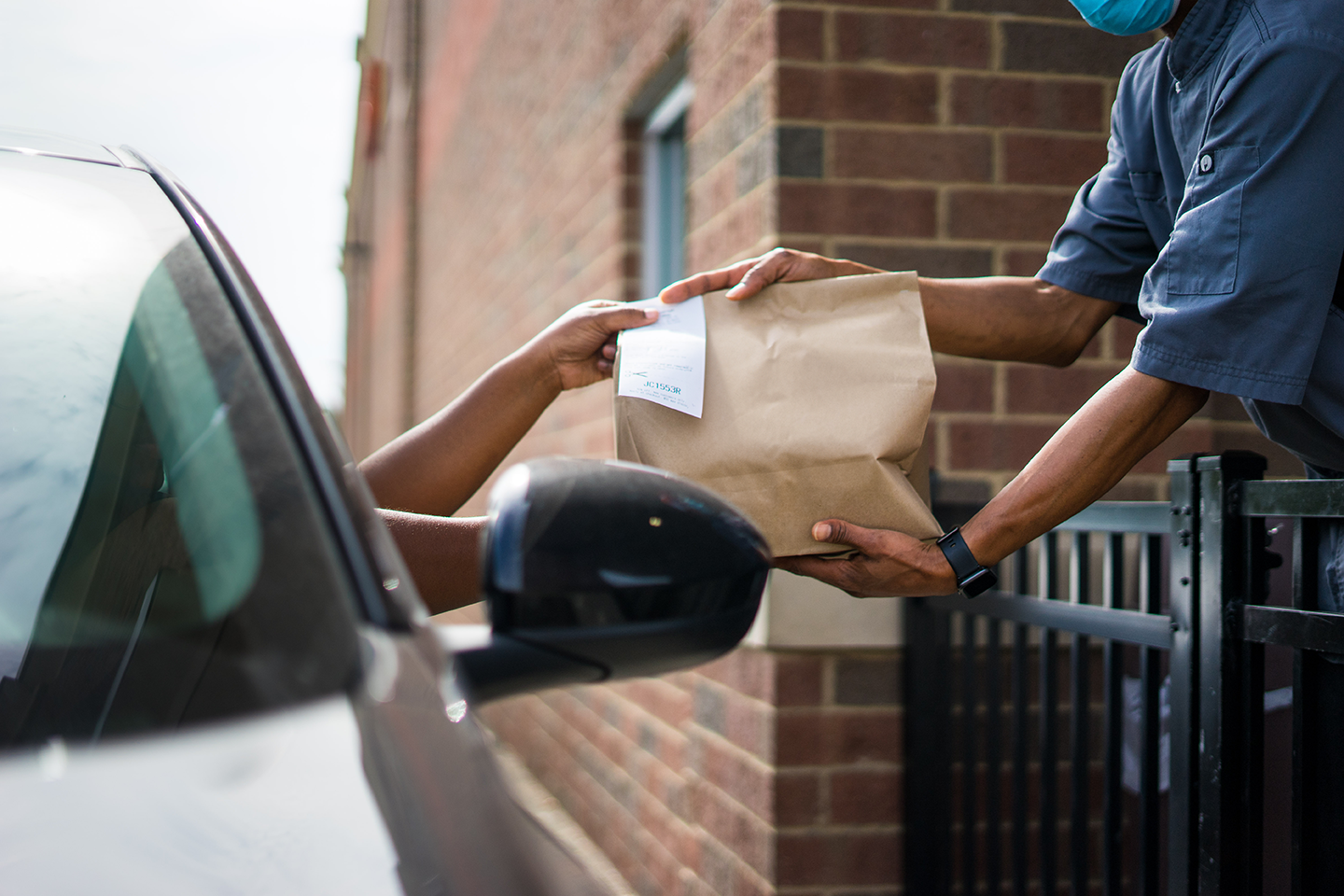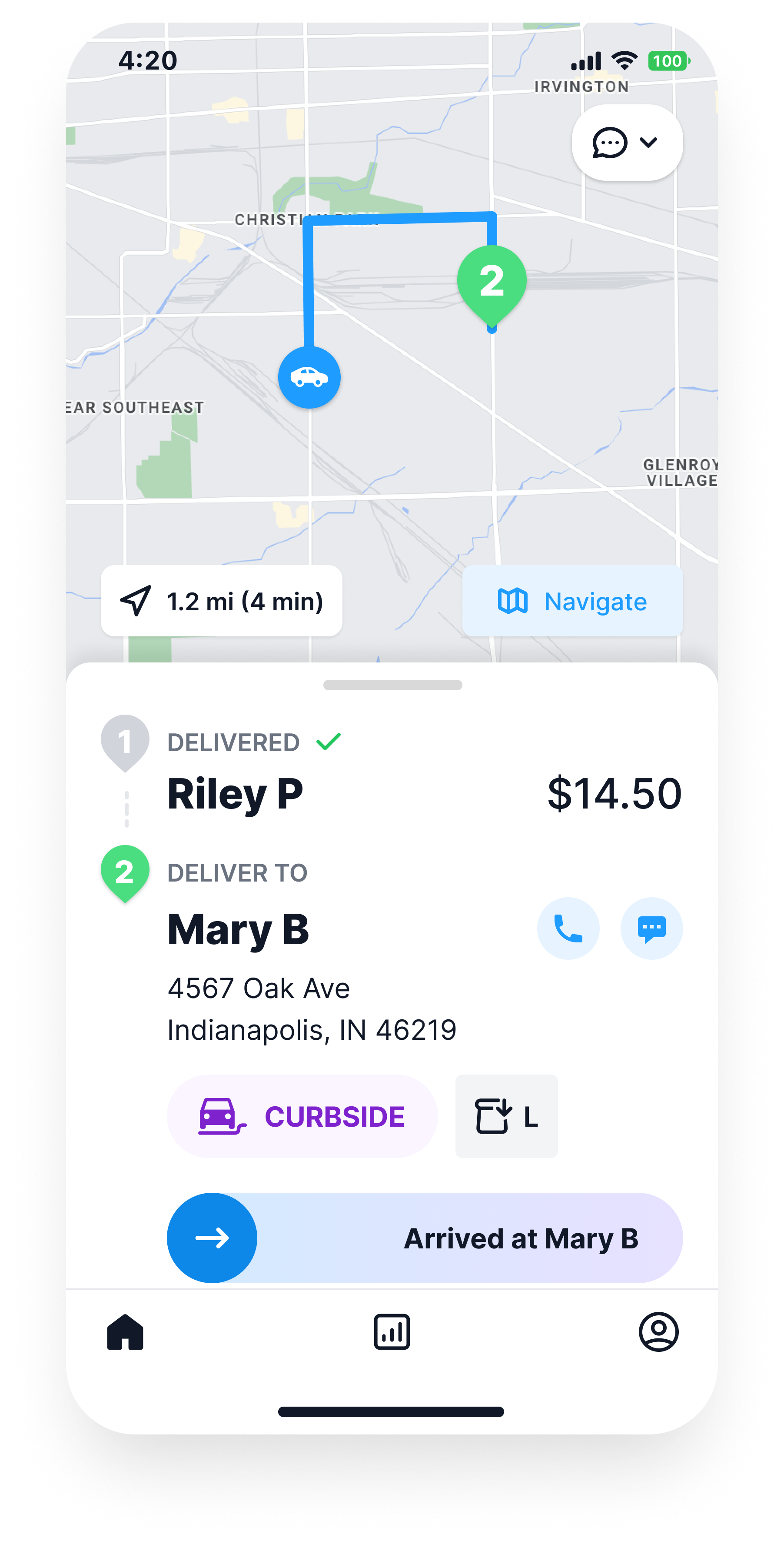
finally, an app that works for drivers
The Empower Driver App is a platform designed for gig drivers to manage their delivery work experience. It offers unique gig work methods and concepts, a low-touch user experience, and transparent earnings and store metrics. The app aims to improve the driver's experience and provide them with more deliveries per hour and fresher food for the customer. The design includes wireframes and UI elements for the driver loop and continuous work.
Project goals
-
Clearly communicate and teach the unique gig work methods and concepts of the Empower Delivery system to the drivers.
-
Create a user experience that is low touch, almost invisible for working drivers.
-
Visualize earnings and store metrics that allow the driver to make the best decisions for financial success.
let’s start with who the app is for,
the drivers.
Delivery gig workers represent a diverse group of individuals who provide on-demand delivery services for various companies and platforms.
Base Research
Among gig platform workers, about 30% say it’s been their main job over past year; many rely on this income to meet basic needs. (Pew Research Center)
In the U.S., about 34% of gig workers are aged 25-34, making this age group the largest segment. (Pew Research Center)
The gig economy is expected to continue growing, with a projected increase of 20% in gig workers globally by 2025. (World Economic Forum)
As of 2023, approximately 36% of U.S. workers are involved in the gig economy, either full-time or part-time. This translates to around 59 million gig workers in the United States. (McKinsey & Company)
First Person Research
I love being able to talk directly to the people who are going to use the product I’m making. I went down to Clustertruck in Indianapolis and chatted with a bunch of delivery drivers. Delivery drivers are a fun, diverse group. I met a lot of really cool people, had some hilarious conversations, and most importantly, gained some key insights:
Delivery drivers are a strong community. Though they are competitive for pay, they stick together and look out for themselves as a whole if they need to (for example, at one site, if delivery tip was too low using DoorDash, the drivers casually unionized by agreeing to not accept the order until DD upped the tip and it exceeded an acceptable number).
Delivery drivers are super adaptable. This is a group of people who aren’t afraid to learn new platforms, technologies, and systems in order to do what they need to do to make money. Most delivery drivers work multiple gig jobs and swap between apps regularly.
Delivery drivers prioritize efficiency. They value platforms that minimize downtime and maximize delivery opportunities. The quicker they can turn orders and make money, the better.
Identifying Deficiencies & Opportunities
In order to pinpoint where this app can really shine compared to competitive apps, I also needed to identify design opportunities that can improve the driver’s experience as well as identify deficiencies in the current solutions. When talking to the drivers, I asked specific questions to gather specific feedback that I could use to build a powerful UX through our app.
Competitive Research
A competitive analysis revealed how the different delivery apps addressed driver needs and challenges, and highlighted areas where I could make our product stand out and improve. By examining other user interfaces, flows, and overall experiences, I learned a lot about what kind of features and capabilities exists in the space and why. This understanding allowed me to design a more intuitive and friendly experience that not only met but exceeded user expectations - differentiating the product in a crowded market.
The driver loop
The “Driver Loop” is the base concept that includes the states that the drivers move through while they are working. The driver loop is a common workflow of delivery drivers. However, the way in which the drivers operate in the loop and change states is unique to Empower Delivery. It’s essential for the drivers to understand the driver loop and the unique markers of our system to operate efficiently.
Coordinated Driver Loops
Drivers are not assigned specific orders upon job offer and are handed/assigned orders once at the store. This removes both the significant wait time at the store as well as the churn of drivers rejecting orders that don’t pay enough. This system optimization enables drivers to execute more deliveries per hour, and in turn, earn much more money per hour.
Individual Driver Loops
Drivers are offered specific orders with specific prices to accept or reject before coming to the store. This results in significant wait times at the store for orders to be complete, as well as a logistical nightmare at busy stores. The drivers take longer to get the order, make less deliveries per hour, and ultimately make less money.
The design
Current clients
The results
<10%
Delivery Cost
Delivery costs restaurants upwards of 30% of their revenue. The cost of our optimized system cuts this cost to 1/3.
29 min
Average Order-to-Delivered Time
Third party delivery averages over 30 minutes from the time ordered to the time delivered.
$0
Delivery Fees
This system allows the restaurant to pass on $0 delivery fees and still remain profitable.
Continuous work
Tracking feedback and managing continuous UX work are crucial for the success of any project. By regularly collecting and analyzing user feedback, I gain valuable insights into how users interact with the product and identify areas that need improvement. This ongoing process allows me to make iterative refinements, ensuring that the user experience remains intuitive and aligned with their needs.

















